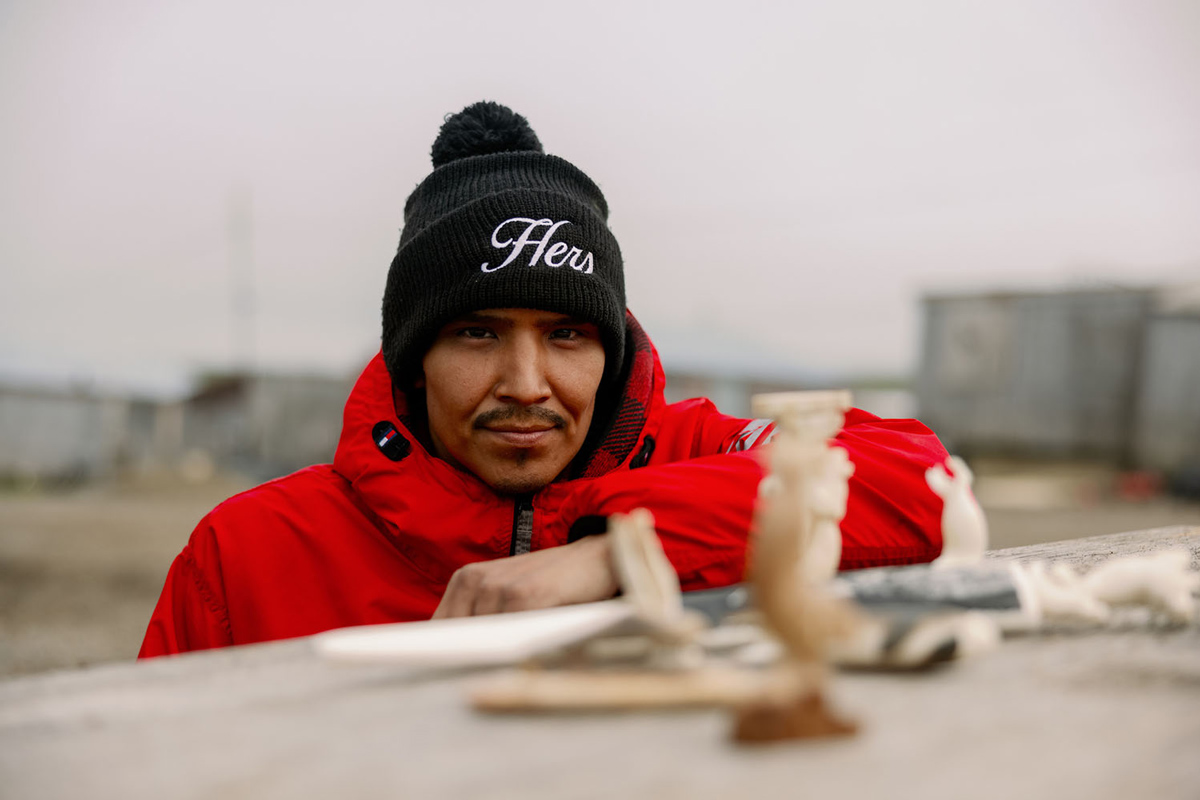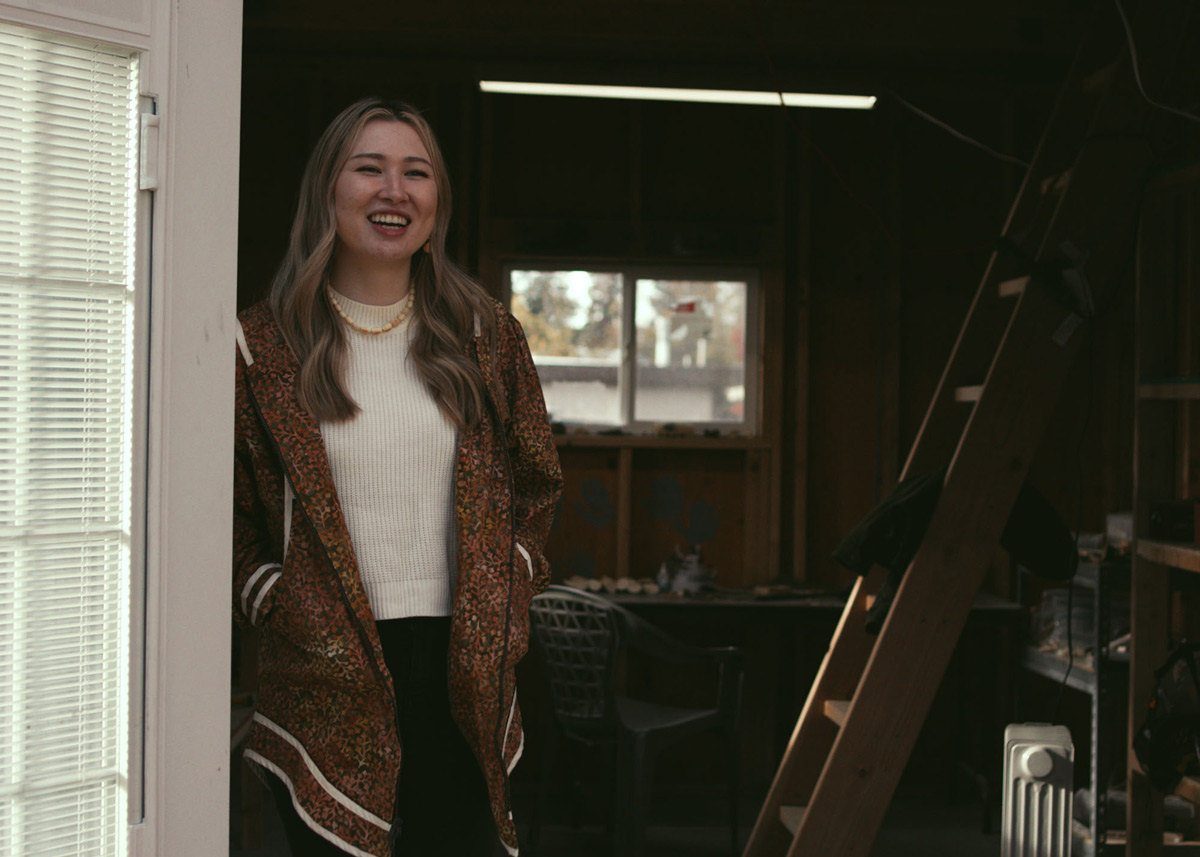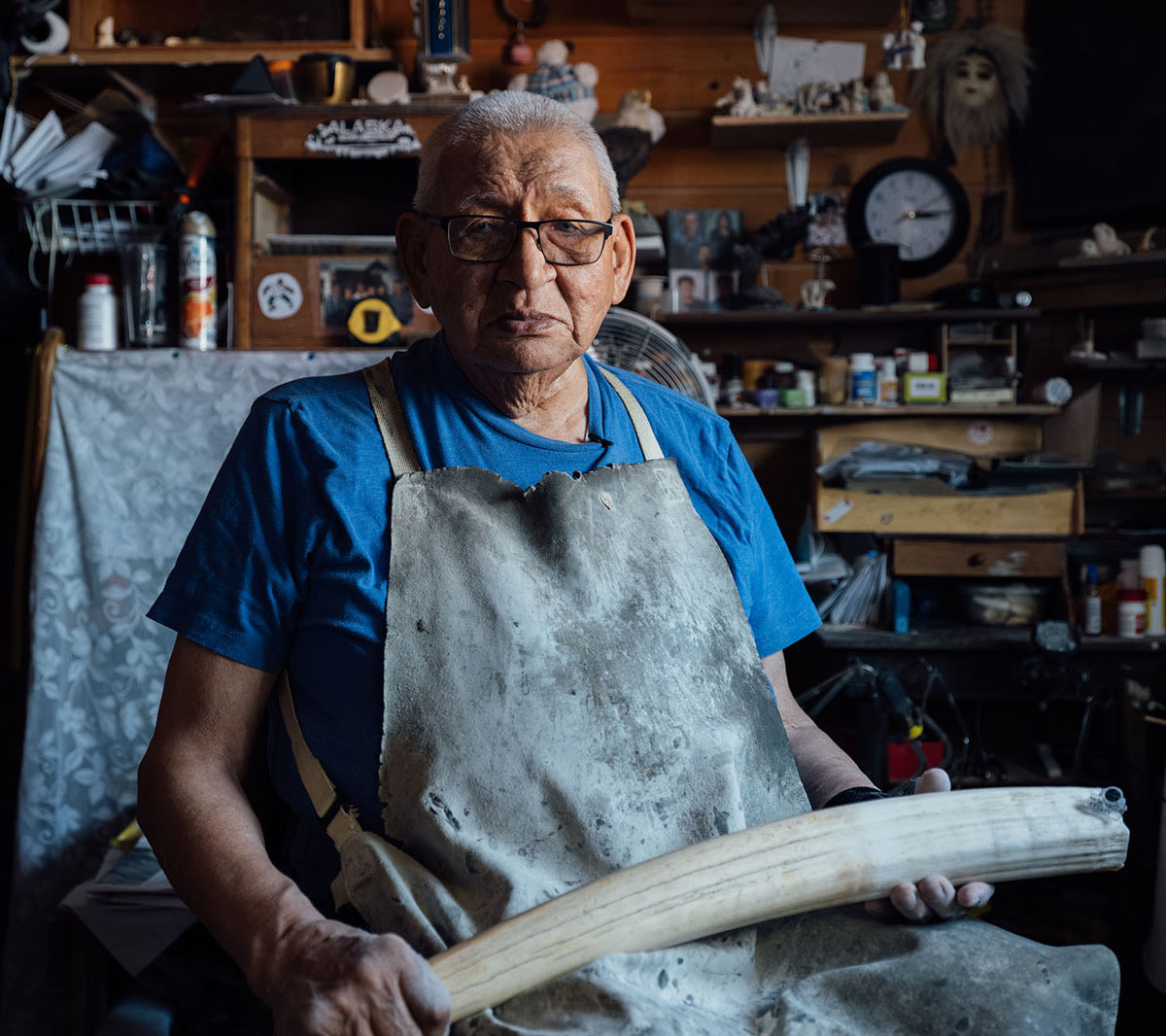Legislation, Education and the Dremel

ur northern coastal regions of Alaska feature incredible beauty. Here, the land and sea have sustained our people for time immemorial, as we continue to move in harmonious coexistence. Our way of life depends on marine mammals, like the Pacific walrus, which provide our Indigenous food security, as well as cultural connection and expression.
Elaborate artistry found in our walrus ivory crafts marks a long tradition of cultural pride and serves as a concrete example of our no-waste values. The walrus continues to tell our stories through carved ivory and drum skin. It supports our vitality through our dance performances and art sales.
Nevertheless, our very traditions that have defined our communities for generations are now at risk, tangled in a web of misunderstanding and unintended consequences. Near-total bans on the commercial trade of ivory—well-intended actions by various Lower 48 states taken to curb illegal poaching of African elephants—has inadvertently cast a shadow over the centuries-old traditions of Alaska Native people. New laws designed with an intent to protect are instead now threatening to erode a heritage that has endured through generations, as the Indigenous use of walrus ivory has become wrongly associated with the horrors of elephant poaching.
To protect Indigenous cultures and traditions, Alaska Native artists and a group of concerned organizations have banded together to launch a national awareness effort. WalrusIvory.org is not just a campaign, it’s a source of education and advocacy, shining a light on the responsible and ethical use of walrus ivory by our Native people. With the aim of addressing misconceptions and combating overly broad ivory bans, this initiative is designed to offer legislators and consumers the tools they need to differentiate between the poaching of African elephants and the sustainable practices of Alaska Native people.

The consequence of misperception
Crucially, the distinction between elephant ivory and walrus ivory is not just one of species but of ethics and sustainability.
Today, the population of Pacific walrus remains robust, thanks to the stewardship of Native people. Our Alaska Native communities have long understood our responsibility toward the environment, harvesting walrus with respect and care. In the practice of subsistence harvesting, every part of the animal is used—from the meat to the hide, blubber, and ivory. This holistic approach serves multiple traditional purposes, all of which hold great significance for our people.
Embracing the practice of minimal waste, walrus ivory finds meaningful purpose as well. Skilled carvers transform this ivory into exquisite artifacts, each bearing the weight of its creators’ stories and life experiences. This art form stands at the core of our cultures and traditions.
Beyond its cultural value, walrus ivory also serves as an economic lifeline. Through their artwork, artists contribute to their families and communities by selling their crafts and bringing financial support to regions where viable economic possibilities can be scarce. This income injects vitality into remote areas, bolstering resilience in the face of limited opportunities.
Unfortunately, several states have enacted overly broad bans on ivory sales—which inadvertently include walrus ivory—and other states are considering adoption of such laws as well. Although enacted with the intention to reduce the horrific practices linked to the trade of elephant ivory, sweeping ivory bans in California, Hawaii, New Jersey, New York, Oregon, and Washington have inflicted damage on the ability of Alaska Native communities to sustain their respectful and responsible walrus harvest traditions.
Compounding this issue, these state laws conflict with federal regulations such as the Marine Mammal Protection Act of 1972, which recognizes the cultural and subsistence significance of Pacific walrus hunting to Alaska Native people and allows us to continue this practice sustainably and sell our handicrafts using byproducts from the animal.
The patchwork of state-specific bans has introduced significant confusion. In a painful twist, this confusion has dealt a heavy blow to Alaska Native artists and their communities, who rely on the sale of their art as primary sources of income. Broad bans on commercial ivory continue to cause uncertainty for visitors about whether buying, owning, or bringing home legally acquired walrus ivory from Alaska is allowed.
Visitors to Alaska from states without broad ivory bans are also affected, as many people have fallen to the assumption that all ivory is “bad.” This misunderstanding prevents walrus ivory purchases, which hurts Alaska Native artists and their small communities.
This fallout doesn’t just take place on Alaska’s homelands. Many Alaska Native artists sell their work nationwide—and even around the world—with shops through online retailers such as Etsy and Facebook Marketplace. Online sales are an important revenue stream, especially for Native artists in rural communities that don’t get in-person tourism traffic. Unfortunately, the lack of understanding about the differences between walrus and elephant ivory have extended to online retailers, as both Etsy and Facebook have prohibited the sale of ivory in general, without differentiating between the ivory types. This disproportionately affects Alaska Native artists by hindering them from legally selling their traditional crafts.

Addressing the issue
The WalrusIvory.org campaign offers easy-to-access resources and a wealth of information to dispel misconceptions and foster understanding about the ethical, responsible, and sustainable use of walrus ivory by Native people. Through engaging documentaries showcasing local carvers and artists, comprehensive data and facts, and answers to frequently asked questions, the website brings the deep-rooted cultural significance of walrus ivory to life for people who may otherwise be unfamiliar with its use.
This campaign is not merely about preserving a material heritage; it’s about safeguarding a way of life that intertwines the land, sea, and people. By raising awareness, correcting misperceptions, and providing a platform for responsible advocacy, the website and its materials exemplify the power of collaboration and perspective.
WalrusIvory.org is a call for others to stand with our Alaska Native communities as we protect our traditions, cultures, and futures.
A look ahead
The relationship between our people and the walrus is a testament to human adaptability and reverence for nature. The WalrusIvory.org campaign presents a unique opportunity to create better understanding about this relationship and clarify myth from fact. It’s a collaboration with Alaska Native artists and our communities, rooted in the wisdom of generations past, to protect rich cultures and ensure a future that continues to honor the walrus’ significance.
As the impact of this campaign continues to resonate across other populations, it echoes a universal truth: A commitment to safeguarding traditions that cherish the land and sea secures a legacy that will withstand the test of time.
Helping sustain a way of life
OUR PARTNERS behind this initiative can only extend their reach so far, so the true power of this work relies on engaging others who are interested in the sustainability of Alaska Native artists, our communities, and the rich tapestry of our cultures. If this is you, here are some ways you can get involved:
Visit WalrusIvory.org. This website, central to the campaign, highlights the stories of real Alaska Native ivory carvers, provides facts and data, and offers a toolkit with downloadable materials that can be easily used and shared.
Spread awareness with toolkit materials. Become an advocate for responsible walrus ivory use by using the toolkit materials available for download. Share the messages widely and help others understand how purchasing walrus ivory artwork from Alaska Native artists supports sustainable and ethical practices.
Engage in conversations. Help dispel misperceptions by explaining the differences between purchasing elephant ivory and walrus ivory artwork. Utilize the resources provided by WalrusIvory.org, adapt the sample letters to the editor, and address common questions and concerns using the provided talking points. Add your unique perspective to the conversation and encourage others to join in.
Purchase walrus ivory artwork. Show your support for Alaska Native artists and their cultures by purchasing walrus ivory artwork. Your purchase directly contributes to the well-being of the individual artists and their communities.
Check your state laws. Research your state’s laws regarding ivory. State governments might not fully understand the allowances of the Marine Mammal Protection Act of 1972, which permits traditional practices involving ivory from marine mammals. Reach out to legislators about the unintended negative impact of overly broad ivory bans on Alaska Native communities.
Experience Alaska’s rich cultures for yourself. Witness the vibrant cultures of Alaska Native communities. Visit and see for yourself the beauty found in the sustainable practices of Alaska Native artists and the communities they represent.
The WalrusIvory.org campaign is managed by Kawerak, Inc. Visit WalrusIvory.org to meet real Alaska Native ivory carvers and hear their stories, gain access to facts and data, and download shareable resources. Questions? Contact Kawerak, Inc. at (907) 443-4344 or walrusivory@kawerak.org.
Kawerak Inc. acts in accordance with its mission, to advance the capacity of our people and Tribes for the benefit of the region. Kawerak is a nonprofit tribal consortium that provides over 40 different programs to the Inupiaq, St. Lawrence Island Yupik and Yup’ik people who reside in 16 communities of western Alaska and represents the 20 federally recognized Tribes in the Bering Strait Region.